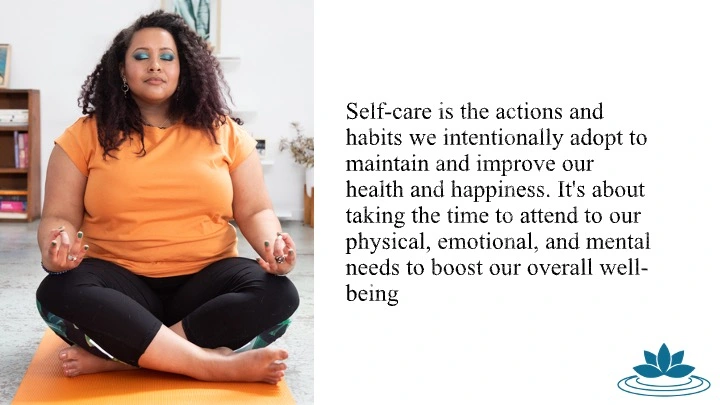I was asked to speak about wellness at our staff meeting at the University of Iowa Libraries this week. This was the first time I had been asked to speak where I work, and I was nervous in a way I hadn’t been nervous when speaking for a very long time. Fortunately, my coworkers are kind, and things went wonderfully. I’m really thrilled to see the commitment to staff well-being in my home library.
I discussed some of the reasons we need self-care and then the 8 dimensions of health to encourage new ways of thinking about self-care—especially free options given the trillion-dollar self-care industry.
This was a 30 minute presentation. You can view a pdf of the slides here.

References
American Psychological Association. (2022, February 11). 6 Tips to Help Take Control of Your Social Media Use and Improve Well-being. American Psychological Association. https://www.psychiatry.org:443/news-room/apa-blogs/tips-to-take-control-of-your-social-media-use
Carpenter, J. (2017, October 18). The “invisible labor” still asked of women at work. CNN Money. https://money.cnn.com/2017/10/18/pf/women-emotional-labor/index.html
Chemaly, S. (2016, January 22). At work as at home, men reap the benefits of women’s “invisible labor”. Quartz. https://qz.com/599999/at-work-as-at-home-men-reap-the-benefits-of-womens-invisible-labor/
Eagly, A. H., & Crowley, M. (1986). Gender and helping behavior: A meta-analytic review of the social psychological literature. Psychological Bulletin, 100(3), 283–308. https://doi.org/10.1037/0033-2909.100.3.283
Ettrah, F. (2018). Vocational Awe and Librarianship: The Lies We Tell Ourselves. In the Library with the Lead Pipe. /2018/vocational-awe/comment-page-2/#comments
Figley, C. R. (n.d.). Compassion Fatigue Awareness Project. Compassion Fatigue Awareness Project. http://compassionfatigue.org/
Hülsheger, U. R., & Schewe, A. F. (2011). On the costs and benefits of emotional labor: A meta-analysis of three decades of research. Journal of Occupational Health Psychology, 16(3), 361-389 http://dx.doi.org/10.1037/a0022876
Maslach, C., & Leiter, M. P. (2008). The Truth About Burnout: How Organizations Cause Personal Stress and What to Do About It. John Wiley & Sons.
Maslach, C., & Leiter, M. P. (2022). The burnout challenge: Managing people’s relationships with their jobs. Harvard University Press
Newman, B. L. (2022). Fostering wellness in the workplace: A handbook for libraries. ALA Editions.
Price, D. (2021). Laziness does not exist: A defense of the exhausted, exploited, and overworked (First edition). Atria Books.
SAMHSA. (2016). Creating a Healthier Life: A Step-By-Step Guide To Wellness (p. 22) [Guide]. Substance Abuse and Mental Health Services Administration.
World Health Organization. (2019, May 28). Burn-out an “occupational phenomenon”: International Classification of Diseases. Burn-out an “Occupational Phenomenon”: International Classification of Diseases. https://www.who.int/news/item/28-05-2019-burn-out-an-occupational-phenomenon-international-classification-of-diseases
World Health Organization. (n.d.). Constitution of the World Health Organization. World Health Organization. https://www.who.int/about/accountability/governance/constitution

Leave a comment